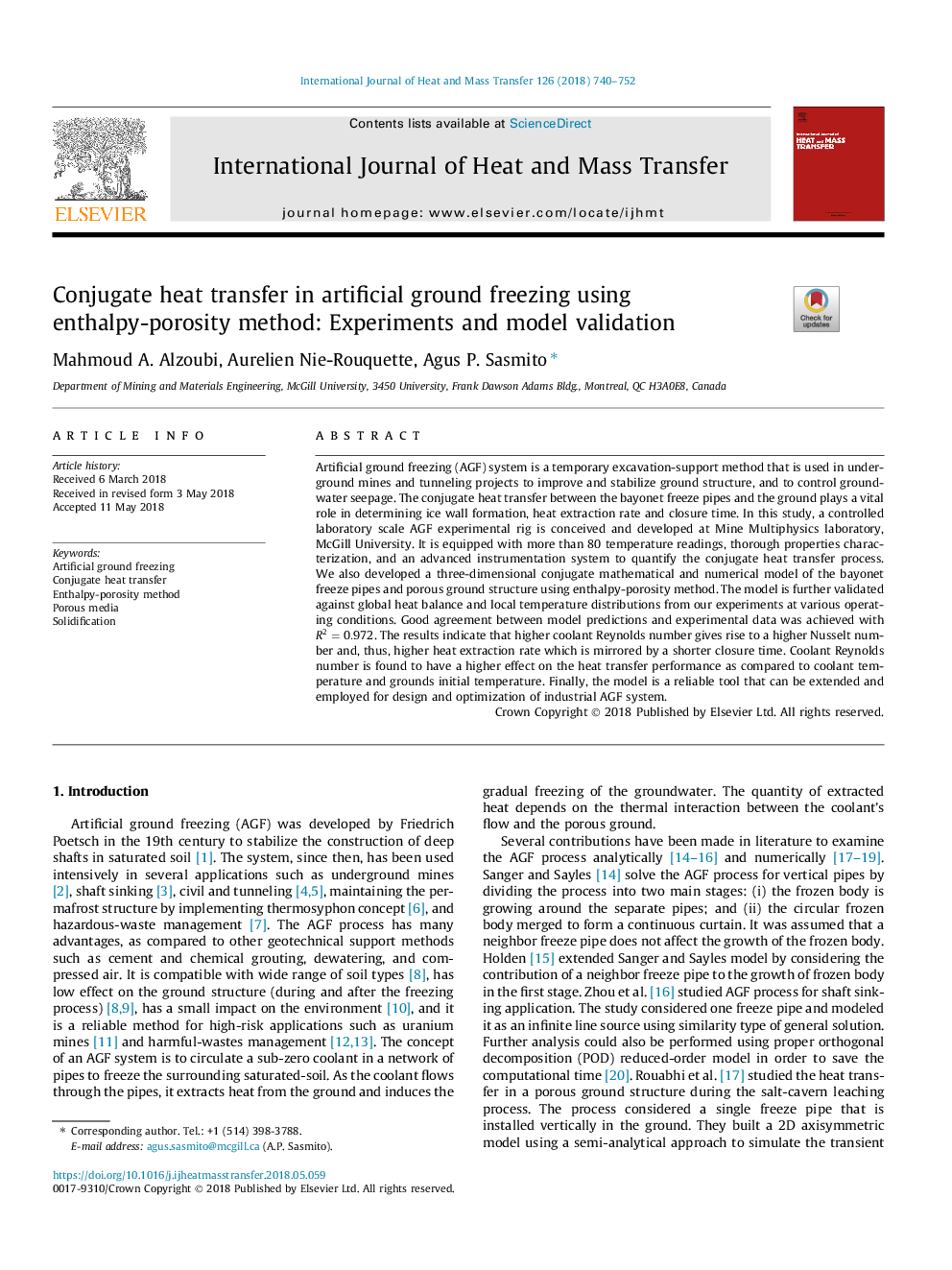| Article ID | Journal | Published Year | Pages | File Type |
|---|---|---|---|---|
| 7054024 | International Journal of Heat and Mass Transfer | 2018 | 13 Pages |
Abstract
Artificial ground freezing (AGF) system is a temporary excavation-support method that is used in underground mines and tunneling projects to improve and stabilize ground structure, and to control groundwater seepage. The conjugate heat transfer between the bayonet freeze pipes and the ground plays a vital role in determining ice wall formation, heat extraction rate and closure time. In this study, a controlled laboratory scale AGF experimental rig is conceived and developed at Mine Multiphysics laboratory, McGill University. It is equipped with more than 80 temperature readings, thorough properties characterization, and an advanced instrumentation system to quantify the conjugate heat transfer process. We also developed a three-dimensional conjugate mathematical and numerical model of the bayonet freeze pipes and porous ground structure using enthalpy-porosity method. The model is further validated against global heat balance and local temperature distributions from our experiments at various operating conditions. Good agreement between model predictions and experimental data was achieved with R2=0.972. The results indicate that higher coolant Reynolds number gives rise to a higher Nusselt number and, thus, higher heat extraction rate which is mirrored by a shorter closure time. Coolant Reynolds number is found to have a higher effect on the heat transfer performance as compared to coolant temperature and grounds initial temperature. Finally, the model is a reliable tool that can be extended and employed for design and optimization of industrial AGF system.
Keywords
Related Topics
Physical Sciences and Engineering
Chemical Engineering
Fluid Flow and Transfer Processes
Authors
Mahmoud A. Alzoubi, Aurelien Nie-Rouquette, Agus P. Sasmito,
